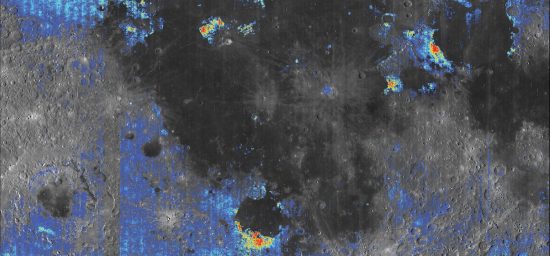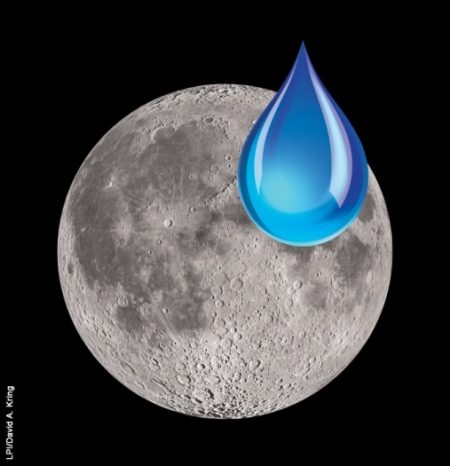July 29, 2017 – Before the latest revelations about water on the Moon, we were told that the best place to find it was at the bottom of craters located at the poles. But now it appears that the Moon may be awash with subterranean water giving a whole new meaning to lunar seas such as the Sea of Tranquility, the location where Apollo 11 touched down in July of 1969.
In Nature Geoscience this month, an article entitled “Remote detection of widespread indigenous water in lunar pyroclastic deposits,” researchers Ralph Milliken and Shuai Li, the former an associate professor at Brown University, and the latter a Brown post-grad doing research at University of Hawaii, describe evidence of “significant water in the bulk lunar mantle.”
They began studying rocks brought back from the Apollo missions and discovered traces of water that could not be explained by contamination. In other words, Moon rocks were a bit wet, similar to basaltic rocks here on Earth. Milliken and Li then studied data collected by the Moon Mineralogy Mapper instrument on India’s Chandrayaan-1, a lunar orbiter that successfully mapped the geology of the Moon from 2008 to 2009. From the images, the researchers were able to deconstruct reflected sunlight and heat while examining pyroclastic (volcanically derived) surface deposits. They were then able to determine the content of the rocks. What they found was water in nearly every pyroclastic deposit including those near the Apollo 15 and 17 landing sites. This confirmed that the presence of water in Apollo Moon rocks was no fluke. The Moon was in fact water rich.
In a July 24, 2017, press release, Milliken notes that water signatures visible in the data were consistent with that from Apollo and Soviet Luna mission samples. He continues, “The distribution of these water-rich deposits is the key….They’re spread across the surface, which tells us that the water found in the Apollo samples isn’t a one-off. Lunar pyroclastics seem to be universally water-rich, which suggests the same may be true of the mantle.”
Based on the impact theories for lunar creation it is a bit of puzzle to explain how the lunar interior could contain so much water, about 0.5% by weight. If the Moon was born from a planet-sized object colliding with the early Earth, one would theorize that any water present, in particular, the hydrogen component, would be lost to space. In such a scenario the interior of the Moon should be bone dry. But these discoveries prove otherwise with some interesting implications. More accessible water resources than those at the lunar poles increases the options available for future locations of human-occupied lunar bases. It means water can be mined rather than having to be trucked from Earth, or harvested from a near-Earth asteroid.
States Li in the press release, “Anything that helps save future lunar explorers from having to bring lots of water from home is a big step forward.”










